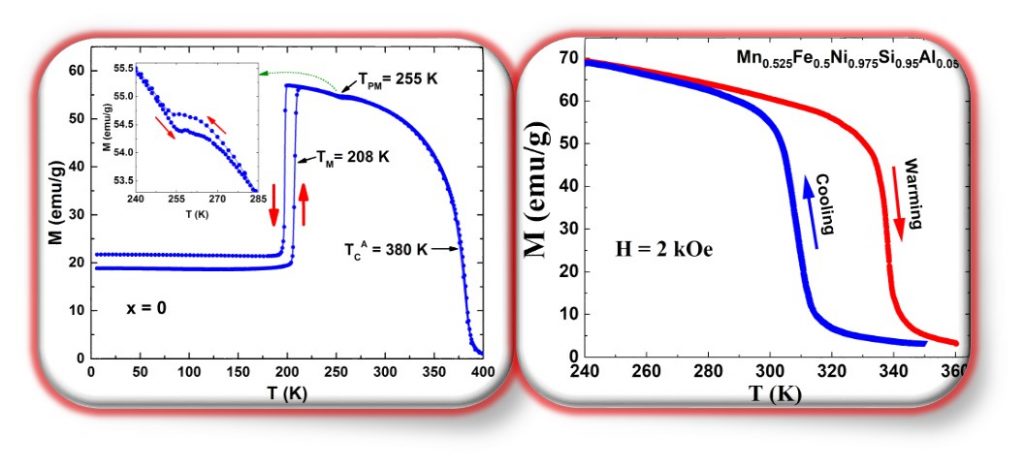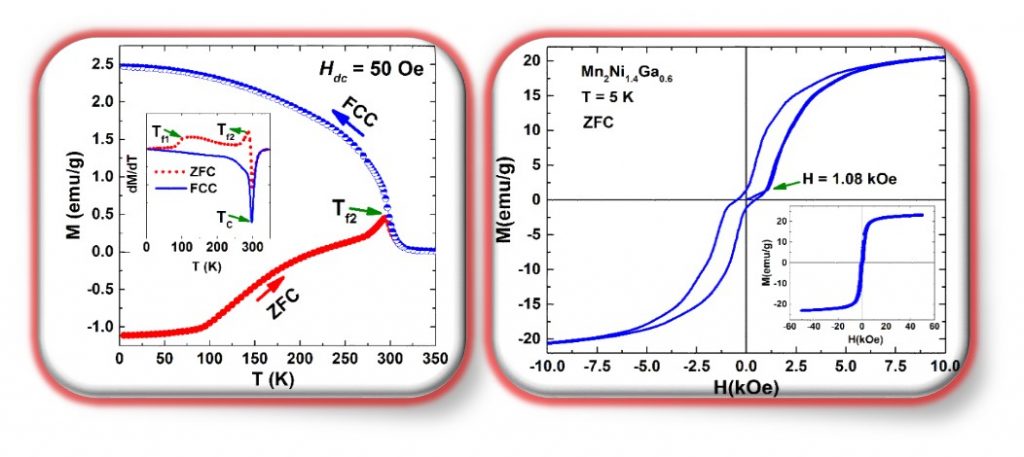Coupled and decoupled solid state phase transitions
Magnetic materials often undergo magnetic phase transitions that can be induced by either or both temperature and magnetic field. In special cases structural phase transitions may accompany these magnetic transitions. The ferromagnetic martensitic transition is one such phase transition that is exhibited by selected ferromagnetic Heusler alloys. One of the focus of my research group is to investigate the effect of stoichiometric variations on the phase transitions and associated properties of these intermetallic systems.

Magnetocaloric effects
The temperature of a selected group of alloys and compounds, known as magnetocaloric materials, changes significantly when they are placed in a magnetic field. This magnetothermal property, which is referred to as the magnetocaloric effect (MCE), can be exploited in the energy efficient and environment friendly magnetic refrigeration technology. Our current research projects include the study of MCE on selected intermetallic compounds.

Exchange bias Effects
The exchange bias (EB) effect (usually observed in layered or composite materials with ferromagnetic (FM) and antiferromagnetic (AFM) interfaces) is described as a shift of the magnetic hysteresis loop along the magnetic field axis. The shift is generally attributed to a unidirectional exchange anisotropy that is induced in the FM layer of the FM/AFM interface when it is cooled in the presence of a magnetic field to a temperature below the Neel temperature (TN) of the AFM layer. This phenomenon is of great interest due to its stimulating fundamental aspects and technological applications including spin valves, magnetic recording read heads, and giant magnetoresistive sensors. My research group explores the EB properties of selected Mn-based Heusler alloys.

Permanent Magnets
Permanent magnets are critical components for numerous technologies like miniature speakers, disk drives, motors for hybrid vehicles and wind generators. The most powerful permanent magnets that currently exist are rare earth based. Because of the high cost and limited availability of rare-earth elements, there is a growing interest in developing new magnetic materials that are free from these critical elements. One of the key properties of high performance magnets is the existence of large magnetocrystalline anisotropy (MCA). Therefore for the development of rare-earth-free magnets it is of great interest to investigate ferromagnetic materials that exhibit large MCA. A selected group of intermetallic alloys based on Mn-Bi, Mn-Al and Mn-Ga are example materials that are potential candidates in this regard. However, in order to fully utilize the large MCA in these materials and make them suitable for applications they must be synthesized with an appropriate composition and structure at the nanoscale level. My research interest is to explore TM based nanostructured materials with the aim of developing rare-earth free and low cost high performance permanent magnets.


